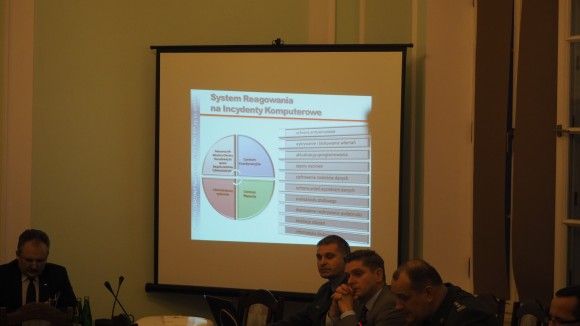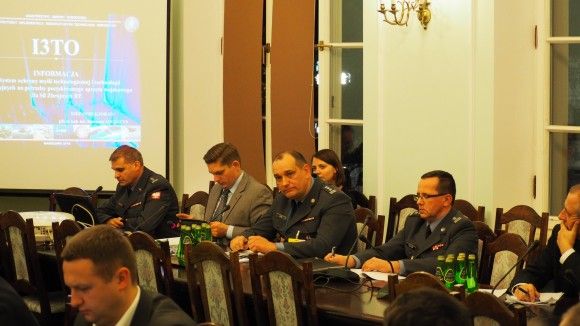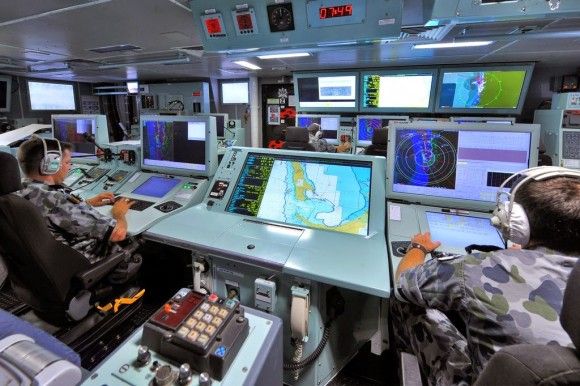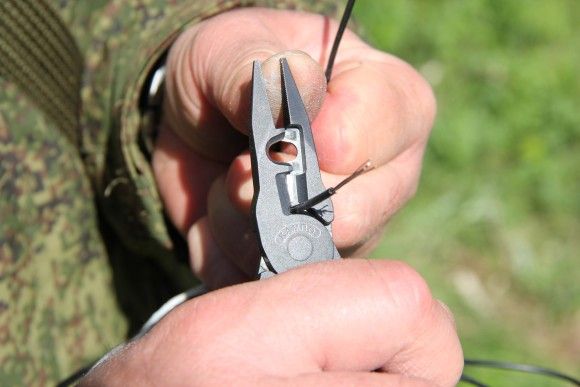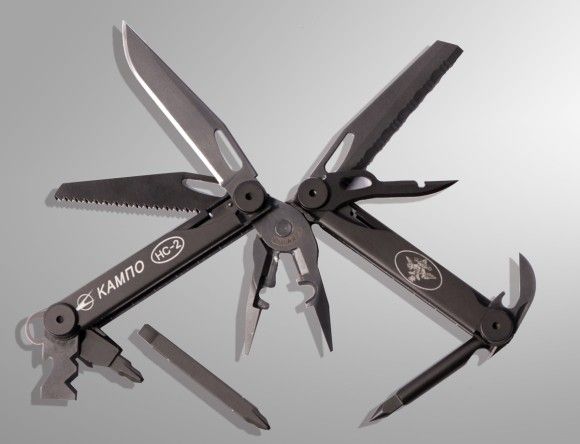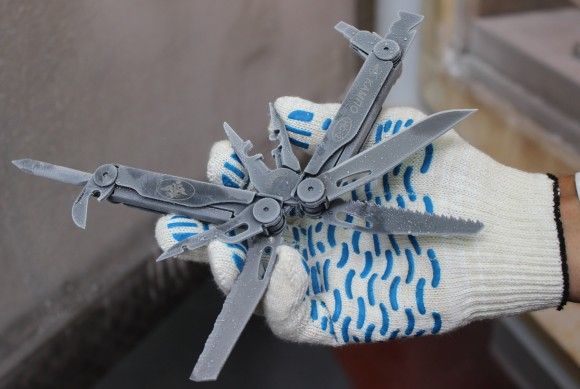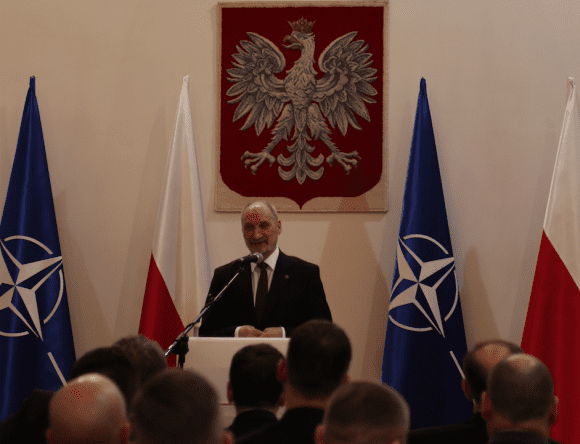“Urban” Śnieżnik and HMMWV Simulators in Kielce
Autocomp Management Sp. z o.o. company based in Stettin, offering simulation and training platforms, has yet again showcased its products in Kielce. Novelty items, such as a simulator of the HMMWV offroad vehicle that may be used to learn how to use the platform in combat conditions and to train shooters, are included among the presented offer.
Autocomp, annually, during the MSPO Kielce Defence Exhibitions, presents modifications of its flagship products, as well as new solutions. The exhibition itself is also a great place to exchange experiences with the users and to promote new, innovative simulation and training solutions.
One of the most recognizable products offered by the company is the SWSB (System for Support of Combat Training) Śnieżnik system, created within the framework of a consortium formed with the Military Institute of Armament Technology (WITU) based in Zielonka. This has been a stationary solution created in two basic forms – Śnieżnik-1 shooting range and Śnieżnik-2 battlefield simulator. The former system, known as a training simulator for firearms, has a purpose of teaching, controlling and assessing the aiming process involved within the use of firearms (individual and group) and preparing the soldiers for individual and group live fire training on conventional ranges, with fire directed against conventional targets.
The latter solution is destined to be used to conduct a variety of tactical scenarios on a virtual battlefield (e.g. infantry squad engagements). Modular and open architecture of the system allows for further expansion with more simulating stations. This makes it possible to organize large scale exercises and perfect cooperation between a variety of military units.
Specialized Śnieżnik systems have also been created, such as simulators for the gunners, navigators, skippers of fast boats and other simulators of weapons or military equipment.
These two devices have now been complemented by the Śnieżnik-3 system presented during the Salon, destined to be used to teach how to operate in closed-quarters and in the directly-surrounding environment. A prototype of this system was premiered during the 2008 edition of the MSPO event, with subsequent presentation of the Śnieżnik-2 CQC (Close Quarters Combat) system during the MSPO 2015 Salon, where with the use of UTM ammunition and combat weaponry one could carry out close quarters battle indoor training.
The latest platform of this type is to teach the soldiers to effectively fire their weapons against actual targets located at short distances and in a variety of locations, within confined spaces. In particular this concerns urban combat, target recognition and neutralization in a variety of lighting conditions, team fighting (with the use of a variety of weapons) or training in reacting to a variety of atypical situations, so specific for highly dynamic operational scenarios.
IT system (controller with a special software package, projectors with cameras recording the hits, sound amplifier, monitor, keyboard, mouse, printer and a kit with training weapons) and the infrastructure of the work station (training rooms with the required auxiliary equipment) are the basic elements that form the whole suite.
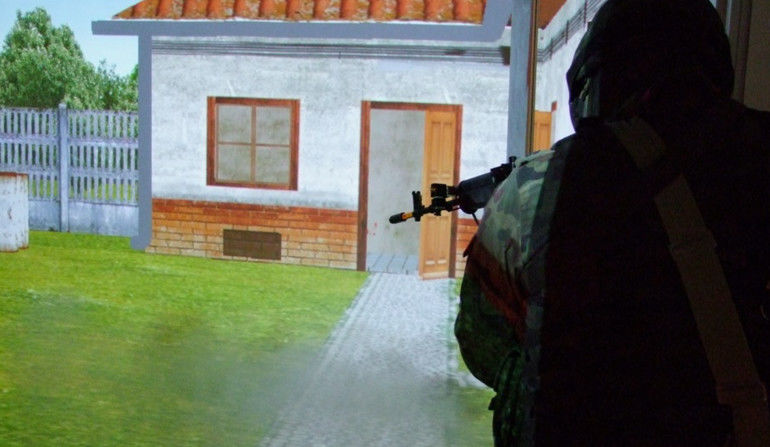
A single room is based on a framework design, it is a mobile room that makes it possible to display, within its interior, a single image of a training scenario. The room features the projection module, camera for preview purposes, speaker and walls, surrounding the trainee from three sides. The rooms, depending on the needs, may be arranged into fragments of buildings.
The training with the use of the said simulator takes place through simulation of imagery, sounds (shots, explosions, shouts, conversations etc.) and operation of the weaponry used (sound of the shots, fire selectors and safety operation, operation of the targeting devices).
The simulated combat scenarios have been based on a 3D model of buildings (operational area) projected onto the screen in a form of a flat imagery. Within those spaces, 3D moving targets and objects are placed. The scaled image increases the realism and allows for creating an impression of actual distance created between the shooter and the target.
Within the device itself, normally assigned weaponry, but tailored to training, is used. The shooter must take into account, when firing the weapon, the sight setting, quantity of ammunition and the firing mode (automatic, single shot) or the operation of weapon’s safety.
Śnieżnik family Śnieżnik Mini system is yet another device presented during the event - it has been premiered back in 2009. It is destined to carry out simulated firearms training, whereas the training station may be placed in standard-sized rooms, as the displayed imagery has a size of 3.5x2.6 m. The compact device, the primary systems of which have been placed in a mini-cabined is cheap to acquire and operate and mobile.
Śnieżnik Mini makes it possible to simulate shooting ranges and the battlefield, and it may accommodate training for up to 4 persons, using varied weapons, at the same time.
HMMWV simulator is destined to teach the trainees how to use the said platform and its armament in combat. Within the scope of simulating combat use of the vehicle, elements such as convoy escort and defence scenarios, movement at a variety of distances or fighting with the use of the vehicle may be trained. The simulator also allows for conducting crew integration training, execution of MEDEVAC scenarios with the use of the HMMWV platform or perfecting the skills of battle management of the commanders at the lower levels.
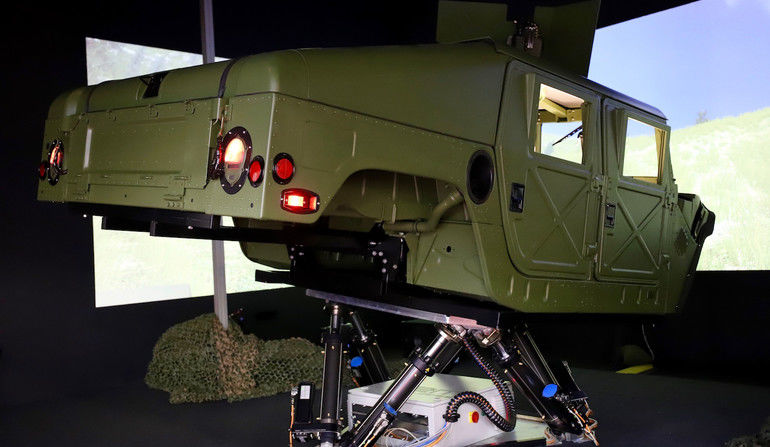
When it comes to the armament, the simulator makes it possible to train the use of the weaponry across a variety of battlefield scenarios, during the vehicle movement or when it is at halt, and to simulate the shooting procedures.
All of the elements, mechanisms and assemblies within the cabin are the actual elements placed within the vehicle or replicas thereof, while the nameplates, arrangement, size and mounting points for them are corresponding with the arrangement within the HMMWV vehicle.
The force imposed on the steering wheel when driving in offroad conditions in varied terrain is simulated, the resistance posed by the pedals or levers within the cabin is actual, while the cabin itself is based on a 6DOF class moving platform.
The vehicle may also feature a 7.62 mm UKMP/PKM general purpose machine gun or Mk 19 40 mm automatic grenade launcher. Meanwhile, the vehicle commander has an R3501 radio simulator at his disposal.
Not only has the Autocomp Management company based its success in the difficult and complicated area in which modern simulation and training solutions are created for a variety of systems (military and civil ones) on the experience of its staff and employees, but also on the technological assets owned. Gathering the experience concerning the everyday operational use of the products, accumulated by all of the end customers, also bears a high degree of significance.
The representatives of the company continuously stress the fact that any idea to introduce new solutions is important, however the client plays an important role in the process of developing the requirements and assumptions and further upgrades for the offered products. The adopted approach allows for constant development and offering of more and more perfected solutions, competitive on the global markets, comparable with products offered by the market leaders.
